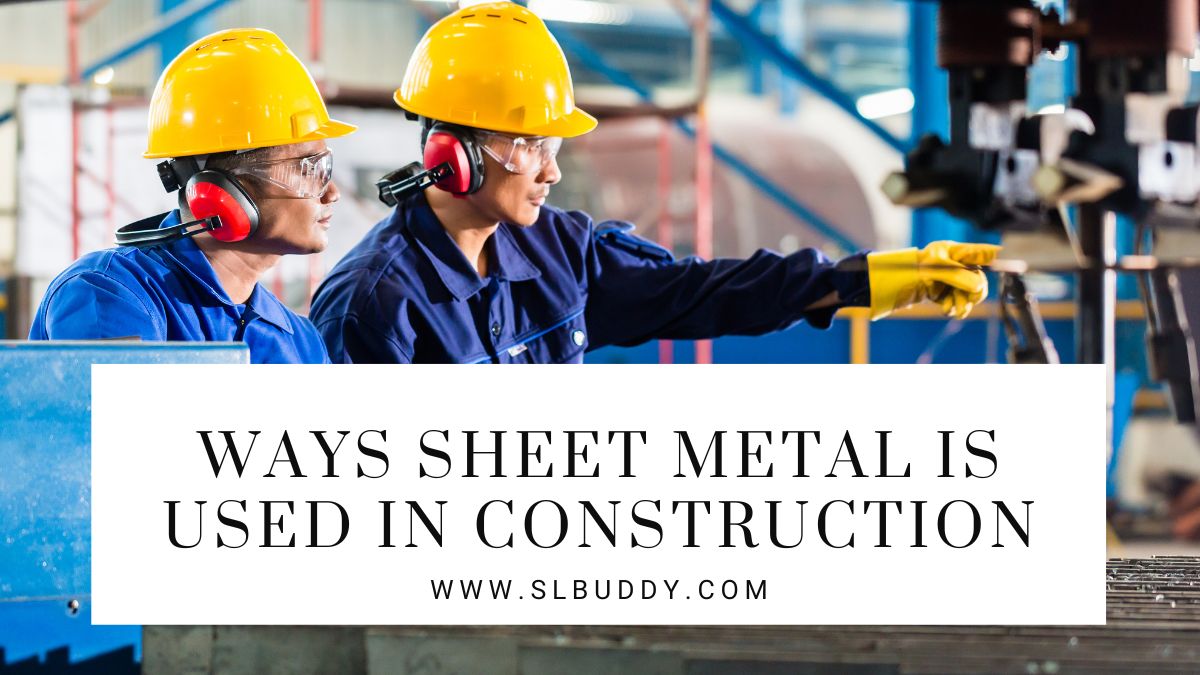
Sheet metal is used in the construction of many types of buildings. Industrial, residential, or commercial buildings all benefit from this resistant material that can be specifically shaped for your needs.
Also, sheet metal is lighter than concrete and wood, which makes it a safer and more versatile option. There are several types of metal you can make these sheets with, such as copper, aluminum, magnesium, and different types of steel.
Having multiple materials to choose from is extremely helpful because they all vary in strength, weight, and use.
This means sheet metal is dependable when used to build different structures. Here are 6 ways sheet metal is used in construction:
1. Columns and Beams
Industrial buildings like warehouses, factories and hangars are usually constructed with metal columns and beams.
Homes with an industrial look in their interior and exterior design also use these types of materials. These columns and beams are usually made with galvanized tubular steel.
You can order them from any sheet metal manufacturer by giving them the engineer-specified width, length, and tensile strength.
Being able to order them makes the building process much easier. It makes construction quicker since these metal columns and beams are set to be assembled and bolted on-the-spot.
For residential buildings with an industrial look, columns and steel beams are usually painted black to highlight the straight edges and lines of the structure. For example, they give glass houses a polished and geometric look.
2. Roof Trusses
Roof trusses are triangular structures that provide structural integrity to roofs because they support vertical, horizontal, and inclined loads.
They’re usually made of wood in residential buildings and metal in industrial settings. But lately, there has been a shift to metal structures because these are lighter.
This is key in roof trusses, which need to be both light and strong because load-bearing walls and structural framing carry them.
This means the lighter roof trusses are, the safer they will be. The bars for roof trusses are made from sheet metal molded to create furring, angle bars and tubular metals.
Aluminum and stainless steel are the two most common metals used by contractors because of their weight and durability.
3. Structural framing
The wood used to be the most common material for structural framing. It was used for hundreds of years.
But it isn’t very efficient because timber is too heavy and is susceptible to termite infestation if the wood hasn’t been treated.
Like for roof trusses, aluminum and steel are the two most common metals used to make tubes, bars and furring for structural framing.
Another positive thing about these two types of metals is that they give enough support to door framing and windows.
4. Roofs and steel decks
Sheet metal is flexible, which makes it ideal to create multiple materials for construction. Some of these materials are corrugated metal sheets used for roofs and steel decks.
Metal roofs are made of rippled sheet metal. Although mostly known for roofing, you can also use these metal sheets for the exterior siding of a building to create an industrial feel.
Metal roofs are also good for making small structures like sheds or shacks. Steel decks on the other hand, are a cheap alternative to the customary concrete slab reinforcement.
Even though they cost less, steel decks are as strong as reinforced concrete, and are lighter because they rely on their corrugation for their strength.
Steel decks are perfect for both commercial and residential buildings when there’s a restricted construction time frame.
5. Air ducts
Sheet metal is an ideal material to make air ducts. These pipes are crucial in construction as they allow the building to breathe.
They are part of the HVAC system of the building. (HVAC stands for heating, ventilation, and air conditioning).
Being dark, enclosed places, air ducts are prone to moisture and mold, so non-corrosive, stainless steel sheets are perfect to fabricate them.
Aluminum and galvanized steel are great materials to make air ducts because they have a protective layer that doesn’t allow rust and mold to form.
Another reason sheet metal is ideal to manufacture air ducts is because of its pliability. It can be curved easily to form the proper bends, shapes, and sizes to fit a space.
6. Awnings and canopies
Another creative use of sheet metal is constructing awnings and canopies with it. Since these parts of the building stick out, they need strong support that demands less or no columns.
Awnings over windows and doors are installed to protect them from sunlight and any type of precipitation.
Awnings’ frames are usually made of tubular steel, while the roofs are made of curved or corrugated sheet metal.
But roofs can also be made with transparent polycarbonate sheets that are held by tubular steel.
Conversely, canopies are usually built to protect outdoor living spaces, such as porches, from the sun. They rely on columns, as opposed to awnings that just stick out.
So, the best way to make them is with galvanized tubular steel so they have better support.
Don’t miss: Can One Person Take Out a Loan on a Jointly-Owned Property?
The bottom line
Sheet metal proves to be an invaluable asset in the construction industry, offering a wide range of applications and benefits.
From its use in roofing and siding to HVAC systems and structural components, this versatile material enhances the durability, efficiency, and aesthetics of building projects.
By understanding the various ways sheet metal is utilized in construction, professionals can leverage its capabilities to create sturdy, functional, and visually appealing structures.
Whether it’s providing protection from the elements or ensuring structural integrity, sheet metal continues to play a vital role in shaping the modern construction landscape.














